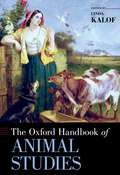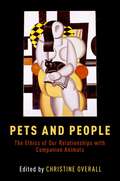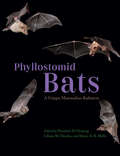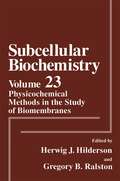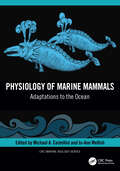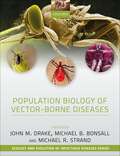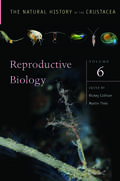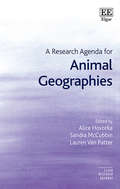- Table View
- List View
Oviraptor (UEB Contracted)
This is an image of an Oviraptor and an Oviraptor skeleton seen from the side and facing to the right. The number of bones in diagram of the skeleton has been reduced to make it easier to read tactually. There is a locator dot shown, which will be at the top left of the page when the image is the correct way up. A scale line stretches across the centre of the page. The Oviraptor was possibly one of the feathered dinosaurs. Its diet is unknown although some evidence points to it being carnivorous. It grew up to two metres in length. It is pictured here at the top of the page. At the left centre of the image is the dinosaurs long tail going to the right. To the right the dinosaurs body can be found with four legs at the bottom of the image. The two back legs on the left are much longer than the front legs on the right. It is thought to have been bipedal, walking on its back legs. At the far top right of the image is the Oviraptorâ TMs head with its distinctive crest. Like a modern bird, it did not have teeth. Only one of its eyes can be found. The Oviraptor skeleton: The image of the skeleton is at the bottom of the page. It is shown at the same scale and is posed in the same way as the picture up the page. At the centre left of the image is the dinosaurs tail going right to its pelvis. To the right again is its spine going right and up the page to its head. Only one of its eye sockets can be found. Its ribs are in the centre of the image and the bones of its legs can be found at the bottom of the page.
Oviraptor (UEB Uncontracted)
This is an image of an Oviraptor and an Oviraptor skeleton seen from the side and facing to the right. The number of bones in diagram of the skeleton has been reduced to make it easier to read tactually. There is a locator dot shown, which will be at the top left of the page when the image is the correct way up. A scale line stretches across the centre of the page. The Oviraptor was possibly one of the feathered dinosaurs. Its diet is unknown although some evidence points to it being carnivorous. It grew up to two metres in length. It is pictured here at the top of the page. At the left centre of the image is the dinosaurs long tail going to the right. To the right the dinosaurs body can be found with four legs at the bottom of the image. The two back legs on the left are much longer than the front legs on the right. It is thought to have been bipedal, walking on its back legs. At the far top right of the image is the Oviraptorâ TMs head with its distinctive crest. Like a modern bird, it did not have teeth. Only one of its eyes can be found. The Oviraptor skeleton: The image of the skeleton is at the bottom of the page. It is shown at the same scale and is posed in the same way as the picture up the page. At the centre left of the image is the dinosaurs tail going right to its pelvis. To the right again is its spine going right and up the page to its head. Only one of its eye sockets can be found. Its ribs are in the centre of the image and the bones of its legs can be found at the bottom of the page.
The Oxford Handbook of Animal Studies (Oxford Handbooks)
Intellectual struggles with the "animal question"-- how humans can rethink and reconfigure their relationships with other animals-- first began to take hold in the 1970s. Over the next forty years, scholars from a wide range of fields would make sweeping reevaluations of the relationship between humans and other animals. The Oxford Handbook of Animal Studies brings these diverse evaluations together for the first time, paying special attention to the commodification of animals, the degradation of the natural world and a staggering loss of animal habitat and species extinction, and the increasing need for humans to coexist with other animals in urban, rural and natural contexts. Linda Kalof maps these themes into the five major categories that structure this volume: Animals in the Landscape of Law, Politics and Public Policy; Animal Intentionality, Agency and Reflexive Thinking; Animals as Objects in Science, Food, Spectacle and Sport; Animals in Cultural Representations; and Animals in Ecosystems. Written by international scholars with backgrounds in philosophy, law, history, English, art, sociology, geography, archaeology, environmental studies, cultural studies, and animal advocacy, the thirty chapters in this handbook investigate key issues and concepts central to understanding our current relationship with other animals and the potential for coexistence in an ecological community of living beings.
Pachycephalosaurus (Large Print)
This is an image of a Pachycephalosaurus and a Pachycephalosaurus skeleton seen from the side and facing to the right. The number of bones in the diagram of the skeleton has been reduced to make it easier to read tactually. There is a locator dot shown, which will be at the top left of the page when the image is the correct way up. A scale line stretches across the centre of the page. The Pachycephalosaurus was a herbivore and up to eight metres long. It is pictured here at the top of the page. At the top left of the image is the dinosaur's long tail. To the right the dinosaur's long body can be found with four legs at the bottom of the image. The two back legs on the left are much longer than the front legs on the right. It is thought to have been bipedal, walking on its back legs. At the far right of the image is the Pachycephalosaurus's head with its distinctive thick skull dome and three spikes on the far right. Only one of its eyes and one of its nostrils can be found. The Pachycephalosaurus skeleton: The image of the skeleton is at the bottom of the page. It is shown at the same scale and is posed in the same way as the picture up the page. At the top left of the image is the dinosaur's tail. To the right is its pelvis. Right again is its spine leading right to its neck and skull with its distinctive thick skull dome and three spikes. Only one of its eye sockets and one of its nostrils can be found. Its ribs are right of the centre of the image and the bones of its legs can be found at the bottom of the page.
Pachycephalosaurus (UEB Contracted)
This is an image of a Pachycephalosaurus and a Pachycephalosaurus skeleton seen from the side and facing to the right. The number of bones in the diagram of the skeleton has been reduced to make it easier to read tactually. There is a locator dot shown, which will be at the top left of the page when the image is the correct way up. A scale line stretches across the centre of the page. The Pachycephalosaurus was a herbivore and up to eight metres long. It is pictured here at the top of the page. At the top left of the image is the dinosaur's long tail. To the right the dinosaur's long body can be found with four legs at the bottom of the image. The two back legs on the left are much longer than the front legs on the right. It is thought to have been bipedal, walking on its back legs. At the far right of the image is the Pachycephalosaurus's head with its distinctive thick skull dome and three spikes on the far right. Only one of its eyes and one of its nostrils can be found. The Pachycephalosaurus skeleton: The image of the skeleton is at the bottom of the page. It is shown at the same scale and is posed in the same way as the picture up the page. At the top left of the image is the dinosaur's tail. To the right is its pelvis. Right again is its spine leading right to its neck and skull with its distinctive thick skull dome and three spikes. Only one of its eye sockets and one of its nostrils can be found. Its ribs are right of the centre of the image and the bones of its legs can be found at the bottom of the page.
Pachycephalosaurus (UEB Uncontracted)
This is an image of a Pachycephalosaurus and a Pachycephalosaurus skeleton seen from the side and facing to the right. The number of bones in the diagram of the skeleton has been reduced to make it easier to read tactually. There is a locator dot shown, which will be at the top left of the page when the image is the correct way up. A scale line stretches across the centre of the page. The Pachycephalosaurus was a herbivore and up to eight metres long. It is pictured here at the top of the page. At the top left of the image is the dinosaur's long tail. To the right the dinosaur's long body can be found with four legs at the bottom of the image. The two back legs on the left are much longer than the front legs on the right. It is thought to have been bipedal, walking on its back legs. At the far right of the image is the Pachycephalosaurus's head with its distinctive thick skull dome and three spikes on the far right. Only one of its eyes and one of its nostrils can be found. The Pachycephalosaurus skeleton: The image of the skeleton is at the bottom of the page. It is shown at the same scale and is posed in the same way as the picture up the page. At the top left of the image is the dinosaur's tail. To the right is its pelvis. Right again is its spine leading right to its neck and skull with its distinctive thick skull dome and three spikes. Only one of its eye sockets and one of its nostrils can be found. Its ribs are right of the centre of the image and the bones of its legs can be found at the bottom of the page.
Parasaurolophus (Large Print)
This is an image of a Parasaurolophus and a Parasaurolophus skeleton seen from the side and facing to the right. The number of bones in the diagram of the skeleton has been reduced to make it easier to read tactually. There is a locator dot shown, which will be at the top left of the page when the image is the correct way up. A scale line stretches across the centre of the page. The Parasaurolophus was a herbivore and up to ten metres long. It is pictured here at the top of the page. At the top left of the image is the dinosaur's tail. Down and right, the dinosaur's barrel-shaped body can be found with four legs at the bottom of the image. The two back legs on the left are much longer than the front legs on the right. It is thought to have walked both on its two back legs and on all four. At the far right of the image is the Parasaurolophus's head with its distinctive cranial crest pointing up and left. Only one of its eyes and one of its nostrils can be found. The Parasaurolophus skeleton: The image of the skeleton is at the bottom of the page. It is shown at the same scale and is posed in the same way as the picture up the page. At the top left of the image is the dinosaur'stail. Down and right is its pelvis. Right again is its spine leading down and right to its neck and skull with its distinctive cranial crest pointing up and left. Only one of its eye sockets and one of its nostrils can be found. Its ribs are in the centre of the image and the bones of its legs can be found at the bottom of the page.
Parasaurolophus (UEB Contracted)
This is an image of a Parasaurolophus and a Parasaurolophus skeleton seen from the side and facing to the right. The number of bones in the diagram of the skeleton has been reduced to make it easier to read tactually. There is a locator dot shown, which will be at the top left of the page when the image is the correct way up. A scale line stretches across the centre of the page. The Parasaurolophus was a herbivore and up to ten metres long. It is pictured here at the top of the page. At the top left of the image is the dinosaur's tail. Down and right, the dinosaur's barrel-shaped body can be found with four legs at the bottom of the image. The two back legs on the left are much longer than the front legs on the right. It is thought to have walked both on its two back legs and on all four. At the far right of the image is the Parasaurolophus's head with its distinctive cranial crest pointing up and left. Only one of its eyes and one of its nostrils can be found. The Parasaurolophus skeleton: The image of the skeleton is at the bottom of the page. It is shown at the same scale and is posed in the same way as the picture up the page. At the top left of the image is the dinosaur'stail. Down and right is its pelvis. Right again is its spine leading down and right to its neck and skull with its distinctive cranial crest pointing up and left. Only one of its eye sockets and one of its nostrils can be found. Its ribs are in the centre of the image and the bones of its legs can be found at the bottom of the page.
Parasaurolophus (UEB Uncontracted)
This is an image of a Parasaurolophus and a Parasaurolophus skeleton seen from the side and facing to the right. The number of bones in the diagram of the skeleton has been reduced to make it easier to read tactually. There is a locator dot shown, which will be at the top left of the page when the image is the correct way up. A scale line stretches across the centre of the page. The Parasaurolophus was a herbivore and up to ten metres long. It is pictured here at the top of the page. At the top left of the image is the dinosaur's tail. Down and right, the dinosaur's barrel-shaped body can be found with four legs at the bottom of the image. The two back legs on the left are much longer than the front legs on the right. It is thought to have walked both on its two back legs and on all four. At the far right of the image is the Parasaurolophus's head with its distinctive cranial crest pointing up and left. Only one of its eyes and one of its nostrils can be found. The Parasaurolophus skeleton: The image of the skeleton is at the bottom of the page. It is shown at the same scale and is posed in the same way as the picture up the page. At the top left of the image is the dinosaur'stail. Down and right is its pelvis. Right again is its spine leading down and right to its neck and skull with its distinctive cranial crest pointing up and left. Only one of its eye sockets and one of its nostrils can be found. Its ribs are in the centre of the image and the bones of its legs can be found at the bottom of the page.
Pets and People: The Ethics of Our Relationships with Companion Animals
Animal ethics is generating growing interest both within academia and outside it. This book focuses on ethical issues connected to animals who play an extremely important role in human lives: companion animals ("pets"), with a special emphasis on dogs and cats, the animals most often chosen as pets. Companion animals are both vulnerable to and dependent upon us. What responsibilities do we owe to them, especially since we have the power and authority to make literal life-and-death decisions about them? What kinds of relationships should we have with our companion animals? And what might we learn from cats and dogs about the nature and limits of our own morality? The contributors write from a variety of philosophical perspectives, including utilitarianism, care ethics, feminist ethics, phenomenology, and the genealogy of ideas. The eighteen chapters are divided into two sections, to provide a general background to ethical debate about companion animals, followed by a focus on a number of crucial aspects of human relationships to companion animals. The first section discusses the nature of our relationships to companion animals, the foundations of our moral responsibilities to companion animals, what our relationships with companion animals teach us, and whether animals themselves can act ethically. The second part explores some specific ethical issues related to crucial aspects of companion animals' lives--breeding, reproduction, sterilization, cloning, adoption, feeding, training, working, sexual interactions, longevity, dying, and euthanasia.
Phyllostomid Bats: A Unique Mammalian Radiation
With more than two hundred species distributed from California through Texas and across most of mainland Mexico, Central and South America, and islands in the Caribbean Sea, the Phyllostomidae bat family (American leaf-nosed bats) is one of the world’s most diverse mammalian families. From an insectivorous ancestor, species living today, over about 30 million years, have evolved a hyper-diverse range of diets, from blood or small vertebrates, to consuming nectar, pollen, and fruit. Phyllostomid plant-visiting species are responsible for pollinating more than five hundred species of neotropical shrubs, trees, vines, and epiphytes—many of which are economically and ecologically important—and they also disperse the seeds of at least another five hundred plant species. Fruit-eating and seed-dispersing members of this family thus play a crucial role in the regeneration of neotropical forests, and the fruit eaters are among the most abundant mammals in these habitats. Coauthored by leading experts in the field and synthesizing the latest advances in molecular biology and ecological methods, Phyllostomid Bats is the first overview in more than forty years of the evolution of the many morphological, behavioral, physiological, and ecological adaptations in this family. Featuring abundant illustrations as well as details on the current conservation status of phyllostomid species, it is both a comprehensive reference for these ecologically vital creatures and a fascinating exploration of the evolutionary process of adaptive radiation.
Physicochemical Methods in the Study of Biomembranes (Subcellular Biochemistry #23)
In mammalian cells many physiological processes rely on the dynamics of the organization of lipids and proteins in biological membranes. The topics in this volume deal with physicochemical methods in the study of biomembranes. Some of them have a long and respectable history in the study of soluble proteins and have only recently been applied to the study of membranes. Some have tradi tionally been applied to studies of model systems of lipids of well-defined com position, as well as to intact membranes. Other methods, by their very nature, apply to organized bilayers comprised of both protein and lipid. Van Meer and van Genderen provide us with an introduction to the field (Chapter I). From their personal perspective regarding the distribution, trans port, and sorting of membrane lipids, they formulate a number of biologically relevant questions and show that the physicochemical methods described in this book may contribute in great measure to solving these issues. The methods of analytical ultracentrifugation have served faithfully for 60 years in the study of water-soluble proteins. The use of detergent extraction of membrane proteins, and the manipulation of density with H20/D20 mixtures, has extended this technique to the study of proteins, and in particular their interactions, from biological membranes. As described by Morris and Ralston in Chapter 2, this technique can be used to determine a number of important properties of proteins.
Physiology of Marine Mammals: Adaptations to the Ocean (CRC Marine Biology Series)
Suppose you were designing a marine mammal. What would they need to live in the ocean? How would you keep them warm? What design features would allow them to dive for very long periods to extreme depths? Do they need water to drink? How would they minimize the cost of swimming, and how would they find their prey in the deep and dark? These questions and more are examined in detail throughout Marine Mammal Physiology, which explores how marine mammals live in the sea from a physiological point of view. This undergraduate textbook considers the essential aspects of what makes a marine mammal different from terrestrial mammals, beyond just their environment. It focuses on the physiological and biochemical traits that have allowed this group of mammals to effectively exploit the marine environment that is so hostile to humans. The content of this book is organised around common student questions, taking the undergraduate's point of view as the starting point. Each chapter provides a set of PowerPoint slides for instructors to use in teaching and students to use as study guides. New "Study Questions" and "Critical Thinking Points" conclude each chapter, which are each motivated by a "Driving Question" such as "How do mammals stay warm in a cold ocean?" or "How do mammals survive the crushing pressures of the deep sea?" Full-colour images and comprehensive, accessible content make this the definitive textbook for marine mammal physiology.
Pig (Large Print)
In this image, the pig is shown from the side with its head on the left of the page and tail on the right. There is a locator dot shown, which will be at the top left of the page when the image is the right way up. This pig is looking towards the left, so only one eye and large ear can be found. Down from the eye is its broad snout used for digging and further down is its open mouth. The pig has a long pink body and stands on four legs, each with a cleft hoof on the end. In the top right of the image is the pig's curled tail.
Pig (UEB Contracted)
In this image, the pig is shown from the side with its head on the left of the page and tail on the right. There is a locator dot shown, which will be at the top left of the page when the image is the right way up. This pig is looking towards the left, so only one eye and large ear can be found. Down from the eye is its broad snout used for digging and further down is its open mouth. The pig has a long pink body and stands on four legs, each with a cleft hoof on the end. In the top right of the image is the pig's curled tail.
Pig (UEB Uncontracted)
In this image, the pig is shown from the side with its head on the left of the page and tail on the right. There is a locator dot shown, which will be at the top left of the page when the image is the right way up. This pig is looking towards the left, so only one eye and large ear can be found. Down from the eye is its broad snout used for digging and further down is its open mouth. The pig has a long pink body and stands on four legs, each with a cleft hoof on the end. In the top right of the image is the pig's curled tail.
Population Biology of Vector-Borne Diseases
Population Biology of Vector-Borne Diseases is the first comprehensive survey of this rapidly developing field. The chapter topics provide an up-to-date presentation of classical concepts, reviews of emerging trends, synthesis of existing knowledge, and a prospective agenda for future research. The contributions offer authoritative and international perspectives from leading thinkers in the field. The dynamics of vector-borne diseases are far more intrinsically ecological compared with their directly transmitted equivalents. The environmental dependence of ectotherm vectors means that vector-borne pathogens are acutely sensitive to changing environmental conditions. Although perennially important vector-borne diseases such as malaria and dengue have deeply informed our understanding of vector-borne diseases, recent emerging viruses such as West Nile virus, Chikungunya virus, and Zika virus have generated new scientific questions and practical problems. The study of vector-borne disease has been a particularly rich source of ecological questions, while ecological theory has provided the conceptual tools for thinking about their evolution, transmission, and spatial extent. Population Biology of Vector-Borne Diseases is an advanced textbook suitable for graduate level students taking courses in vector biology, population ecology, evolutionary ecology, disease ecology, medical entomology, viral ecology/evolution, and parasitology, as well as providing a key reference for researchers across these fields.
Rattlesnake (Large Print)
This image shows a rattlesnake viewed from above. There is a locator dot shown, which will be at the top left of the page when the image is the right way up. The snake's head is towards the top left of the page, with two eyes and its forked tongue pointing to the left. Its long thin body extends in a wiggly curve down the page to the warning rattle on its tail in the bottom right corner. The snake has a distinct diamond pattern on its body.
Rattlesnake (UEB Contracted)
This image shows a rattlesnake viewed from above. There is a locator dot shown, which will be at the top left of the page when the image is the right way up. The snake's head is towards the top left of the page, with two eyes and its forked tongue pointing to the left. Its long thin body extends in a wiggly curve down the page to the warning rattle on its tail in the bottom right corner. The snake has a distinct diamond pattern on its body.
Rattlesnake (UEB Uncontracted)
This image shows a rattlesnake viewed from above. There is a locator dot shown, which will be at the top left of the page when the image is the right way up. The snake's head is towards the top left of the page, with two eyes and its forked tongue pointing to the left. Its long thin body extends in a wiggly curve down the page to the warning rattle on its tail in the bottom right corner. The snake has a distinct diamond pattern on its body.
Red Squirrel (Large Print)
In this image a red squirrel sits upright on its hind legs. There is a locator dot shown, which will be at the top left of the page when the image is the right way up. It is shown from the side, but its head is turned to face you, so both its ears and eyes can be found. Its head is on the right of the page and tail on the left. The squirrel has two pointed ears on top of its head, each with a tuft of hair on the end. Directly down from this are the squirrel's large eyes on each side of its head. Down again is its nose and mouth. To the left is the squirrel's neck and body. The squirrel has red fur and a white chest and tummy. Both of its forearms can be found; directly below this are both its hind legs. To the left of its legs is the squirrel's big fluffy tail.
Red Squirrel (UEB Contracted)
In this image a red squirrel sits upright on its hind legs. There is a locator dot shown, which will be at the top left of the page when the image is the right way up. It is shown from the side, but its head is turned to face you, so both its ears and eyes can be found. Its head is on the right of the page and tail on the left. The squirrel has two pointed ears on top of its head, each with a tuft of hair on the end. Directly down from this are the squirrel's large eyes on each side of its head. Down again is its nose and mouth. To the left is the squirrel's neck and body. The squirrel has red fur and a white chest and tummy. Both of its forearms can be found; directly below this are both its hind legs. To the left of its legs is the squirrel's big fluffy tail.
Red Squirrel (UEB uncontracted)
In this image a red squirrel sits upright on its hind legs. There is a locator dot shown, which will be at the top left of the page when the image is the right way up. It is shown from the side, but its head is turned to face you, so both its ears and eyes can be found. Its head is on the right of the page and tail on the left. The squirrel has two pointed ears on top of its head, each with a tuft of hair on the end. Directly down from this are the squirrel's large eyes on each side of its head. Down again is its nose and mouth. To the left is the squirrel's neck and body. The squirrel has red fur and a white chest and tummy. Both of its forearms can be found; directly below this are both its hind legs. To the left of its legs is the squirrel's big fluffy tail.
Reproductive Biology: The Natural History of the Crustacea, Volume 6 (The Natural History of the Crustacea)
This is the sixth volume of a ten-volume series on The Natural History of the Crustacea. The volume synthesizes in nineteen chapters our current understanding of diverse topics in crustacean reproductive biology. In the first part of this book, the chapters address allocation strategies to reproduction, gamete production, brooding behavior, and other components of parental care in crustaceans. The second part of the volume centers on sexual systems in crustaceans. The third section of the volume covers crustacean mating systems and sexual selection. Reproductive Biology ends with three chapters covering diverse topics including reproductive rhythms, crustacean personality research, and record breaking crustaceans with respect to reproductive characters.
A Research Agenda for Animal Geographies (Elgar Research Agendas)
Elgar Research Agendas outline the future of research in a given area. Leading scholars are given the space to explore their subject in provocative ways, and map out the potential directions of travel. They are relevant but also visionary.Exploring the innovative and thriving field of animal geographies, this Research Agenda analyses how humans think about, place, and engage with animals. Chapters explore how animals shape human identities and social dynamics, as well as how broader processes influence the circumstances and experiences of animals.This Research Agenda presents recent forays into theories of power, methodological innovations unearthing animal lifeworlds, and commitments to praxis. It demonstrates opportunities for animal geographies to engage creatively with diverse movements, including industrial farm workers' rights, intersectional feminism, the environmental movement, racial equality, and decolonization. Critical and timely, contributions from top and emerging scholars suggest that it is time to bring the animals outwards into broader geographical dialogue to address pressing contemporary issues such as climate change.An important read for animal and human geographers, this will be a foundational text for emerging scholars interested in critical perspectives on human-environment relations and societal dynamics. Its grounding in historical evaluation, discussion of scholarly innovation in the field and the opportunities to reflect on the topic in a time of socio-ecological crisis will also be helpful for more established scholars.

